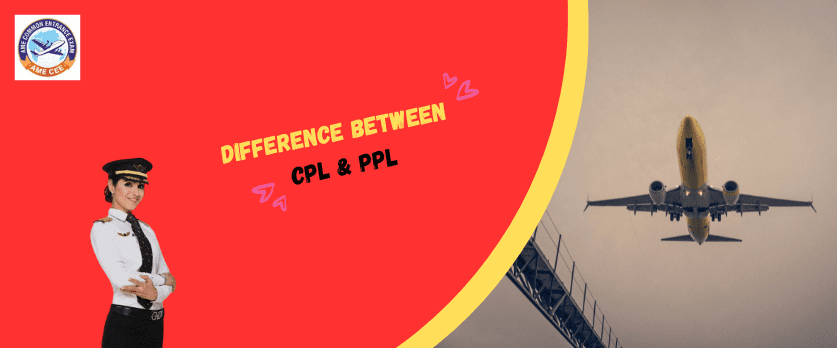Here are the complete differences are shown below in detailed
PPL (Private Pilot License)
Purpose: Designed for personal and recreational flying.
Privileges: Allows the holder to act as the pilot-in-command (PIC) of an aircraft for non-commercial purposes.
CPL (Commercial Pilot License)
Purpose: Aimed at individuals pursuing a career in aviation.
Privileges: Authorizes the holder to receive compensation for piloting services and act as the PIC in commercial operations.
Training Requirements:
PPL (Private Pilot License)
Requires completion of a PPL training program.
Involves a minimum number of flight hours, typically around 40-50 hours.
Training covers basic flight maneuvers, navigation, and emergency procedures.
CPL (Commercial Pilot License)
Requires prior attainment of a PPL.
Involves more advanced training, including additional flight hours (usually 150-200 hours or more).
Training includes complex maneuvers, instrument flight, and commercial flight operations.
Flight Experience:
PPL (Private Pilot License)
Focuses on building foundational flying skills.
Emphasizes proficiency in handling the aircraft and basic navigation.
CPL (Commercial Pilot License)
Builds on PPL experience with an emphasis on professionalism and commercial operations.
Includes advanced flight maneuvers, cross-country flights, and night flying.
Ground School and Exams:
PPL (Private Pilot License)
Ground school covers fundamental aviation subjects.
Requires passing written exams on topics like air law, meteorology, and navigation.
CPL (Commercial Pilot License)
Ground school covers more advanced subjects, including commercial regulations and procedures.
Requires passing additional written exams on topics relevant to commercial aviation.
Instrument Rating:
PPL (Private Pilot License)
An instrument rating is not mandatory for PPL holders.
CPL (Commercial Pilot License)
Many CPL programs require candidates to obtain an instrument rating (IR).
Multi-Engine Rating:
PPL (Private Pilot License)
Multi-engine rating is not typically required for PPL.
CPL (Commercial Pilot License)
Some CPL programs include training for a multi-engine rating, allowing the pilot to operate aircraft with multiple engines.
Career Opportunities:
PPL (Private Pilot License)
Primarily for personal enjoyment and recreation.
Does not qualify for compensation as a pilot.
CPL (Commercial Pilot License)
Opens doors to various aviation careers, including airline and charter operations.
Allows for compensation as a professional pilot.
Conclusion
In summary, while both PPL and CPL involve flight training and acquiring a certain level of expertise, the key distinction lies in the purpose and privileges associated with each license. A PPL is geared toward personal flying, while a CPL is the gateway to a professional career in aviation, offering expanded privileges and the ability to earn compensation as a pilot.
To become an commercial pilot you may could join commercial pilot license through AME COMMON ENTRANCE EXAM (AME CEE) this examination you may join Commercial Pilot License approved by DGCA.


